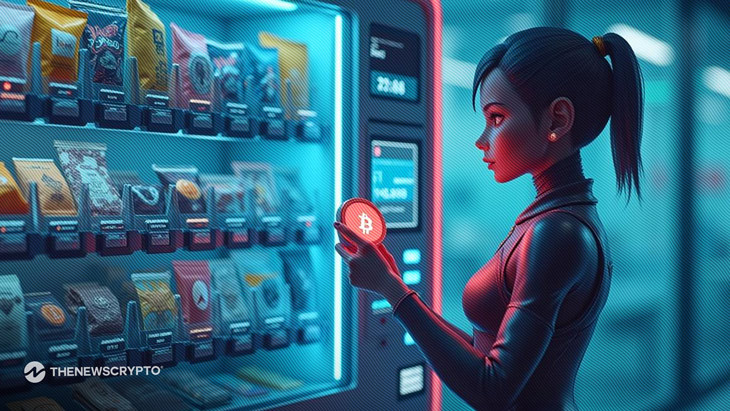Virtual worlds are a part of our internet lives now, and they provide us with new means of discovery and participation. Blockchain and cryptocurrency have given the metaverse a reliable friend in its drive for innovation and growth. This article explores the intersection of crypto and the metaverse, what cryptocurrency does for virtual economies, and where this promising partnership is headed.
Metaverse and its Efficiency
This includes something very important; the first thing is what the metaverse actually is. In other words, this is a virtual shared space constructed by various parties where users come into contact with computer-generated surroundings and other individuals in real time. The Metaverse is therefore not just an extension of ordinary virtual reality as it pertains to different experiences of immersion within the digital arena.
It means people can do things, for whatever reason, that cannot be done in the real world: express themselves in ways the real world is restricted to; personalize avatars, homes, and businesses; and participate in numerous activities and experiences. It is just a playground of creativity and innovation with endless possibilities for collaboration and exploration.
History of Virtual Worlds
Virtual worlds have come a long way since their inception. From the text-based early adventures to the very visually rich and immersive environments of current days, technological advancements have driven this evolution. The next step promises even greater immersion and interactivity in the metaverse.
Blurred lines define the real and virtual worlds because technology is advancing. The metaverse peeks into a future where digital life becomes part of one’s life daily. Through their ability to transform industries such as entertainment and education, the metaverse will redefine how we interact with technology and with each other.
Crypto and the Metaverse: A Partnership
It turns out that an excellent natural ally for the metaverse is rising in the forms of Bitcoin, Ethereum, and other cryptocurrencies, offering unique prospects for ownership, value exchange, and decentralization in virtual worlds based on blockchain technology.
The growth of this virtual world has been able to transform the way people interact with virtual worlds through cryptocurrencies. These inventions open up new paths for creators, investors, and consumers to change the narrative on digital ownership and transactions in immersive online worlds.
Here are some notable tokens that are actively used within various metaverse platforms:
MANA is like the virtual world in which you can buy, build, and sell your own digital land. These purchases are done using MANA tokens, and you also have a vote in the decisions regarding how the world is run.
The Sandbox (SAND): In The Sandbox, anyone can develop their own games and make money from them. You buy, sell, collect, and even trade unique digital items known as NFTs, all in SAND tokens while earning rewards within the game.
Axie Infinity (AXS): This is essentially a game where players can collect, breed, and battle cute creatures known as Axies. Here, you use the token known as AXS to join battle and, in the process, the token earnings one rewards plus shares on how the game is managed.
Enjin Coin (ENJ): Enjin Coin allows you to create, share, or trade virtual items. You can transform your digital creations into NFTs, which are backed by ENJ tokens.
The Position of Crypto in Virtual Reality
Another prominent feature of crypto within the metaverse is ownership of virtual assets. Similar to ownership of land or digital commodities in a video game, cryptocurrency allows users to take possession of digital assets securely and decentralized. Such ownership translates into increased autonomy and the option to move and exchange their properties as they would like.
Using cryptocurrencies in virtual reality creates a new era of digital economies. Here, the value of virtual assets is determined by market demand and user engagement. This shift towards decentralized ownership allows users to monetize their creations and investments within the metaverse, creating a dynamic ecosystem of virtual goods and services.
Blockchain Technology and the Metaverse
Blockchain technology, the basis of cryptocurrencies, is a key component of the metaverse. By offering a clear and unalterable record, blockchain guarantees that virtual assets are real and rare. It also makes possible smart contracts, autonomous contracts that execute transactions and enforce rules in virtual worlds.
In addition to this, blockchain provides immutability and security to virtual transactions, giving reliability and transparency to virtual transactions as well, thus reducing fraud or counterfeit cases in the metaverse. Thus, the secure infrastructure will be laid for a sustainable virtual economy; users can comfortably trade, do business, and socialize with confidence, thus not having digital assets to worry about.
The Effect of Cryptocurrency on Virtual Economies
One of the most interesting features of the metaverse is the emergence of virtual economies. These economies are established on the purchase, sale, and exchange of virtual resources, and cryptocurrencies have been playing a crucial role in their development.
With increasing virtual worlds, cryptocurrencies shift how users interact within such digital environments. Blockchain technology offers a transparent and secure means of ownership tracking for virtual assets, proving they are authentic and averting fraud. This trust and responsibility increase faith in virtual economies, inviting more users to engage in digital goods and services trade.
Virtual Assets and Cryptocurrency
Cryptocurrencies redefine the value of virtual assets within the metaverse. Acting as a medium of exchange, users can exchange virtual assets into real money or other digital currencies. This provides opportunities for users to generate real income from their virtual activities, creating a gray area between digital and physical worlds.
The “play-to-earn” model has gained popularity in virtual economies. Here, users monetize their in-game achievements and possessions using cryptocurrencies. This gamification of earning potential changes how people engage with virtual worlds, turning leisure activities into profitable ventures.
Impact of Crypto on Online Marketplaces
Decentralized virtual marketplaces based on cryptocurrencies create new opportunities in the metaverse. Consumers can purchase, sell, and exchange virtual assets among themselves without the use of traditional intermediaries. This peer-to-peer value exchange promotes autonomy and empowerment among consumers, with greater control over their virtual assets and transactions.
Moreover, virtual marketplace smart contracts facilitate automated execution of transactions, which guarantees that contracts between parties are enforced without the need for intermediaries. Such effectiveness and openness simplify the trade process, minimizing costs and transaction speed enhancement in virtual economies.
Future Directions of Crypto in the Metaverse
Integrating cryptocurrency into the metaverse offers exciting opportunities for individuals and businesses. It enables new revenue streams, improves cross-border payment systems, and promotes financial inclusivity. However, it also raises concerns about security, regulatory frameworks, and potential abuse. Balancing innovation with protection is crucial as this relationship develops.
The crypto-metaverse relationship is only in its nascent stages, but already, there are forecasts regarding how it will influence the future. Some picture a metaverse in which virtual assets secured by cryptocurrencies are harmoniously incorporated into everyday life. Others predict difficulties and adaptation. Whatever the result, crypto will have an important part in defining the future of the metaverse.
How the Metaverse Will Revolutionize Cryptocurrency?
The metaverse and cryptocurrency are distinct ideas but can peacefully coexist. Bitcoin, for instance, has use both in the real and virtual worlds. Most ideas of the metaverse, such as Mark Zuckerberg’s, peripherally touch on crypto and blockchain.
There is, however, synergy between the two concepts. Folks love to spend money, and shopping rapidly emerged as a core characteristic of Web1 and Web2, and thus Web3 isn’t any different. It is certain that although no one knows exactly what shape the metaverse will eventually take, it can certainly have a lot to do with the evolution of cryptocurrency and how it affects society.
Virtual World, Real Value
One major advantage of the virtual world is reduced friction compared to the real world. Want to go somewhere? Click a link or press a button, and your avatar is there. No need for costly transport, passports, or packing luggage.
Similarly with cryptocurrency. Dealing with conventional money, “fiat,” means a huge infrastructure of regulators and banks as custodians and middlemen. Cryptocurrency transactions typically require only software on ordinary computers.
Certainly, transactions in cryptocurrencies are energy-hungry. But mechanisms are being streamlined, and there are newer technologies which intend to conserve energy. More recent proof-of-stake cryptos are environmentally friendlier compared to older proof-of-work-based cryptos like Bitcoin.
As the metaverse becomes more popular and more of our lives move online—working in virtual offices, playing games with friends, or taking metaverse vacations—we need friction-free ways to pay for virtual goods and services. We might want to spend it on virtual real estate, owning digital land to entertain friends or build businesses.
The metaverse may bring enormous value to the world economy—$1.5 trillion by 2030. Most of that value may be captured in cryptocurrency, perhaps making crypto mainstream as more users make payments using it.
If this occurs, governments and lawmakers will most likely increase efforts to control and regulate cryptocurrencies. While more nations are creating regulatory schemes for digital currency, it is still a “wild west” situation with minimal protection for consumers or businesses that depend on coins such as Bitcoin, Litecoin, or Dogecoin. Consumers have few options if they are victims of scams.
As they gain popularity, governments may tax them depending on their energy efficiency or environmental footprint. Networks that employ wasteful proof-of-work algorithms may be taxed more, while those employing efficient proof-of-stake algorithms could be taxed less.
The Road to Adoption
Banks and financial institutions will probably intensify their attempts to support cryptocurrency or blockchain-based financial systems. To remain competitive in a world of borderless, middleman-free financial systems, they will have to simplify their infrastructure. Although some, such as the IMF head, forecast that cryptocurrency will ultimately displace traditional banking, companies will probably still have some degree of protection and regulation from banks and central banks.
But companies that will succeed in this new world will be forward-thinking and adaptable with their cryptocurrency use policies. Payment systems such as PayPal and Mastercard are embracing cryptocurrency. That particularly Bitcoin, wholeheartedly, realizing its key position in the payments future.
What Comes Next?
No one, not even Mark Zuckerberg, can say for certain how the metaverse will become a part of our lives. However, something is certain: businesses will exploit it to generate money, and consumers will use it to spend money.
Obviously, the currency in the virtual world should be made from cryptocurrencies. As for the revolutionary technology of cryptocurrency, this is merely at its early stage, so developments in our lives will help it grow and form. With every passing day, more people choose to spend their time online. As this virtual environment grows increasingly immersive, entertaining, and engaging. That there is a sure growth in importance attached to it from the usage of cryptocurrency.
Governments will need to regulate cryptocurrencies to make them more environmentally friendly and useful. As cryptocurrency becomes the main medium of exchange in the metaverse, users will get accustomed to acquiring, handling, and storing it. This will increase usage outside the metaverse, like sending money to friends and family at lower fees compared to traditional currency.
The combination of cryptocurrency and the metaverse is full of potential. As the two technologies continue to develop, their convergence could redefine online experiences and transform the world economy. With challenges such as regulation and energy usage, the future of crypto in the metaverse is bright. With new possibilities for innovation, economic growth, and financial freedom.
Read the full article here









